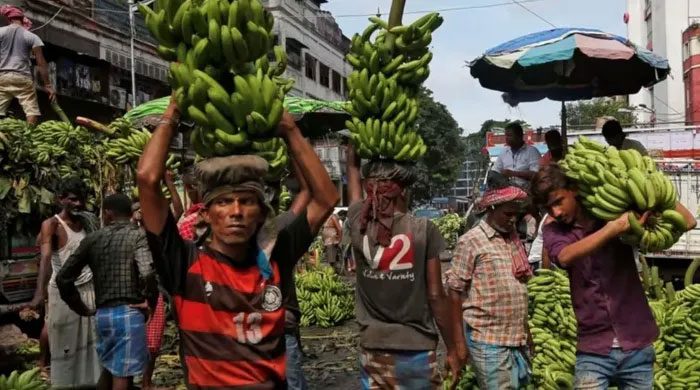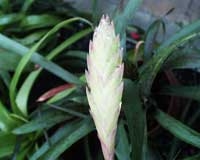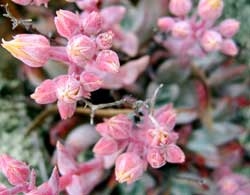Panama Disease Resurfaces, Threatening One of the World’s Most Valuable Crops
Decades after banana crops declined globally, Panama disease is once again threatening to wipe out this staple crop in Asia, Latin America, and beyond.
Vietnam is projected to lose up to 71% of its banana cultivation area within 25 years due to a fungus called Fusarium. Researchers from organizations including the Vietnam Plant Resource Center and the Messe Botanical Garden in Belgium warned in a scientific paper published in February about the fungus. Fusarium infiltrates banana plants through their roots and damages the plant’s vascular system, causing wilting. The spores can contaminate soil for decades.
Steven Janssens, one of the authors, stated: “Bananas are one of the most important food crops worldwide. If Fusarium continues to spread, the impact on humanity could be quite significant,” he said.

Bananas displayed in a store in Halle, Belgium. This fruit is consumed worldwide and grows in tropical regions from Southeast Asia to Latin America. (© Reuters)
Another study cited in the article predicted a similar loss of banana cultivation in China and the Philippines.
In the first four months of 2022, Vietnam was the second-largest supplier of banana varieties to China, reaching $139.5 million, a 66.1% increase compared to the same period in 2021, accounting for 29.2% of total imports, up 6.5 percentage points year-on-year.
Vietnam was also the seventh-largest banana supplier to Japan in the first three months of 2022, with 1.5 million tons valued at 166 million yen ($1.3 million), marking a 38.5% increase in value and a 30.2% rise compared to the same period last year. Vietnamese bananas are highly regarded in Japan but face fierce competition from bananas from the Philippines, Mexico, and Ecuador.
The impact of Panama disease has led to a significant decline in banana quality in many countries due to the need to use disease-resistant varieties.
The dangers of the Fusarium fungus were noted in the 1950s when it devastated banana plants in and around Panama. This disease, known as Panama disease, only subsided after causing billions of dollars in damage to growers and nearly wiping out the Gros Michel variety.
More than half of the bananas grown worldwide today are of the Cavendish variety, which has a relative resistance to Fusarium wilt. However, a new strain emerged in the 1990s and is currently attacking Cavendish bananas in Malaysia and other parts of Southeast Asia.
This strain, known as Tropical Race 4 (TR4), was also detected in Colombia in 2019 and in Peru in 2021, raising concerns that the entire global banana population could be at risk of extinction.
Modern bananas are derived from a seedless variety that began cultivation in Southeast Asia around 5000 BC or earlier. Growers propagate the plants by cloning, making them genetically identical to the “parent” plant, which increases the risk of the population being wiped out by pathogens like TR4. The lack of seeds complicates the development of new varieties with better disease resistance.
Over 100 million tons of bananas are produced globally each year, with no significant decrease in sight.
Tsutomu Arie, a professor specializing in plant pathology at Tokyo University of Agriculture and Technology (TUAT), stated: “I don’t think bananas will go extinct.”
It is challenging to assess the urgency of the banana population’s status globally, but TR4 is a concern for the industry.
About 20 countries have reported the fungus spreading to infected plants or via contaminated soil or planting materials. The only sure way to limit its spread is through quarantine.
According to the Food and Agriculture Organization of the United Nations, India is the world’s largest banana producer with 31.5 million tons, followed by China with 11.51 million tons, then Indonesia, Brazil, Ecuador, and the Philippines. Since many of these countries grow most of their crops for domestic consumption, a large portion of exports comes from Central and South America.
The economic impact of the banana market is estimated to reach tens of billions of dollars, and the global economy would feel a loss even if only a small fraction of that were affected.

Workers unloading bananas from a truck at a market in Kolkata. According to the Food and Agriculture Organization of the United Nations, India is the world’s leading banana producer. (© Reuters)
Vaccination is one of the strategies that Arie and others are implementing to combat TR4. Introducing various harmless Fusarium fungi into crops could enhance resistance to more dangerous species or keep them away from their roots.
Starting in the 2023 fiscal year, the Japanese research team, led by TUAT, will collaborate with partners including La Molina National Agricultural University in Peru on countermeasures such as diagnostics and soil management.
James Dale, a professor at Queensland University of Technology in Australia, stated that his team has applied gene editing technology to develop TR4-resistant banana plants.
With the emergence of tightly regulated genetically modified bananas, this variety is not expected to be commercially grown in Australia until late 2024.
However, this represents significant progress. Dale noted: “It contains a resistance gene that we transferred from a wild banana that is immune to TR4.”
Some scientists have attributed the spread of the fungal disease to decades of banana cultivation and production that have focused solely on taste. Diversity is seen as a barrier against plant diseases.
Hundreds of banana species grow in what is known as the “banana belt”, located 30 degrees north and south of the equator. Bananas are not only a food source but also a primary source of income. It is estimated that around 500 million people consume bananas as their staple food.





















































